6. A navigable route leading out of a lake or a waterway side branch:
white or black (depending on the background) square stepped edge array; at night - a board marked with green light (Lynx. 6)
7. Underwater obstacle on the navigable route:
white, in red vertical stripes a floating bober indicates an obstacle, which can be avoided on both sides (Lynx. 7)
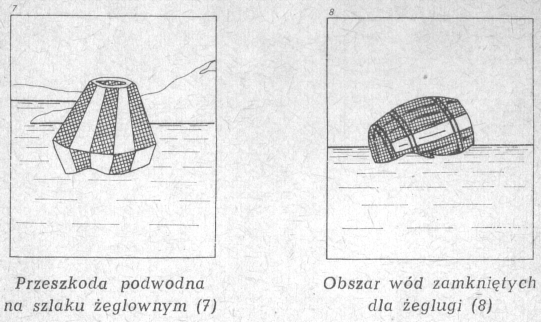
8. The area of water closed to shipping (off the trail), for the protection of fish stocks, sports boat stop, quarantines etc.. and a marking of the anchorage of the shuttle cable:
floating baken (or barrel) red in color with a white horizontal stripe in the center (Lynx. 8)
9. Free passage width in spans of fixed bridges:
a) two red and white square plates, placed on a navigable span from both directions of travel, with the white color facing the center of the free space, with the corner downwards (Lynx. 9a) two green lights at night;
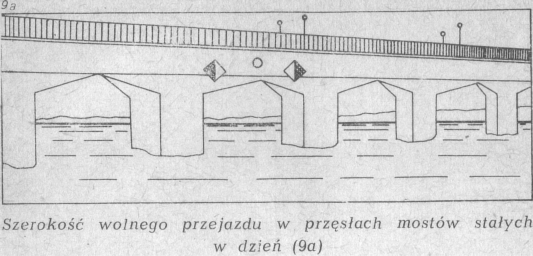
b) one yellow light, placed in the middle of the free passage (between two green ones), means free passage in two directions (Lynx. 9b)
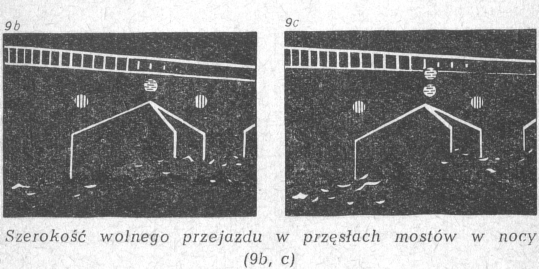
c) two yellow lights one above the other, placed in the middle of the free passage, (between the green ones) mean passage allowed in one direction (Lynx. 9c)
10. Drive through a movable span in bridges and through locks:
a. one red light means the passage is closed (Lynx. 10a)
b. one red, and the other is green light, placed side by side, indicate a closed drive - prepare to drive (Lynx. 10b)
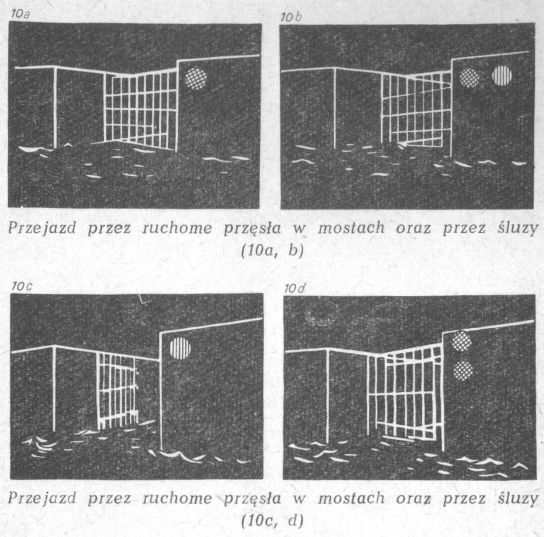
c. one green light means free passage (Lynx. 10c)
d. two red lights placed one above the other mean, that the movable navigable span of the bridge or the lock is closed - temporary closure of the navigable route (Lynx. 10d)
11. Closing of the navigable route:
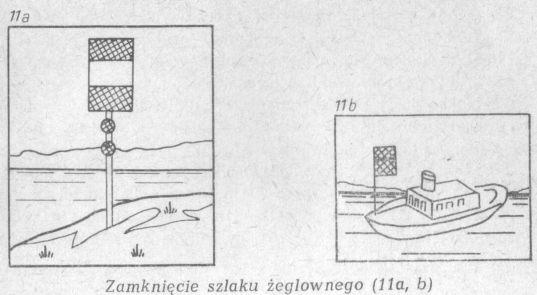
a. shore board with red and white transverse stripes; at night, two red lights placed one above the other (Lynx. 11 a)
b. on a damaged ship, or unable to move, a necessitating the closure of the navigable route, two red flags are placed on the mast one above the other (Lynx. 11b)
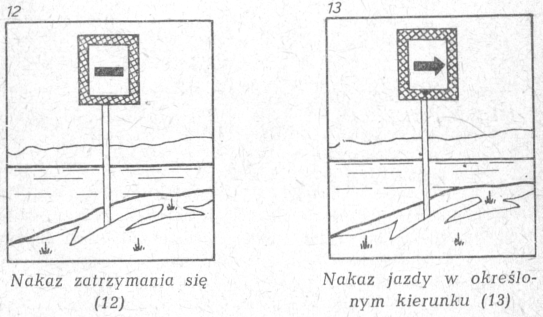
12. Stop order under the conditions prescribed by law:
shoreline board, white background with a transverse black stripe, with a red border (Lynx. 12)
13. Driving order in a certain direction of the navigable route: border board at a junction, black arrow on white background with red border (Lynx. 13)
14. Parking place at the waterway quay: a blue border board with a white letter "P” with the vertices of the triangles facing each other, at the beginning and end of a stopping distance; at night the blackboard illuminated with white light (Lynx. 14)
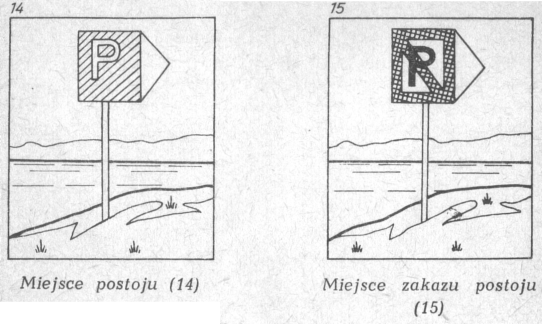
15. No stopping place at the waterway quay: border board with a triangle, on a white background the letter P crossed out with a diagonal red stripe. The boards are placed on poles, with the vertices of the triangles facing each other, at the beginning and end of the episode, where parking is prohibited; at night the blackboard illuminated with white light (Lynx. 15)
16. Place of interbank water transport - blue shoreline board with a white stripe, over which a white ship is painted (Lynx. 16)
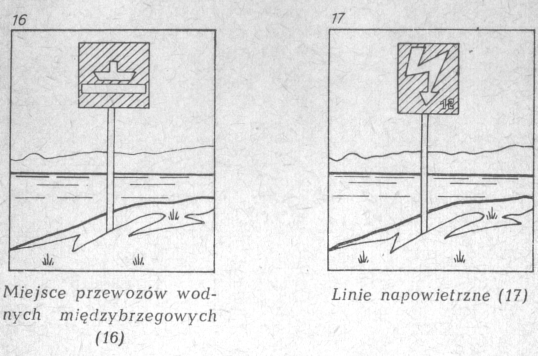
17. Overhead lines: blue border board with white, vertical lightning, the height of the clearance in meters is given in the corner of the board (Lynx. 17)
18. No anchoring, landing on the shore and stopping in sections 100 m in both directions:
a white border board with a red border, cut with a red stripe with a black inverted anchor (Lynx. 18)
19. Dangerous material:
red flag with a white letter ,,E” located fore and aft, and a red plate with a white letter ,,E” amidships the ship (Lynx. 19);
in the night, in addition to the navigation lights, two additional blue lights on the mast.
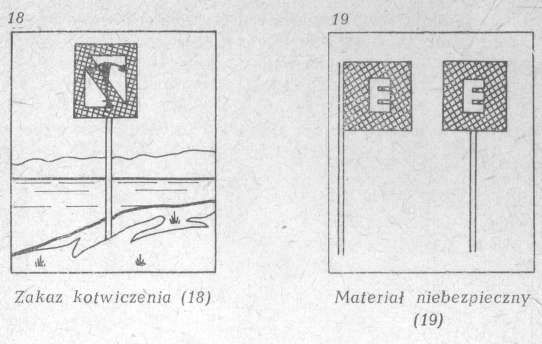
In addition to visual signs, there are also conventional sound signals. Sound signals (auditory) is given by short and long siren sounds, signal trumpet, steam whistle etc.. The short beep should last for one second, long beep 4-6 seconds, the interval between them should be one second.
| — | attention (Attention) |
| — — | call to open a lock or bridge and call for a guard |
| . | I'm driving the ship to the right |
| . . | I'm driving the ship to the left |
| . . . . . | I cannot get ahead or pass |
| — . | I want to turn starboard |
| — . . | I want to turn my port side |
| — . . . | an order to stop ships coming from the opposite direction |
| — — . | I'm going to overtake and steer the ship to the right |
| — — . . | I'm about to overtake and steer the ship to the left |
| — — — — — | long-lasting sounds - I call for help |
| . . . . . . | series of double short beeps - man overboard |
| . . — — | I am carrying hazardous materials |